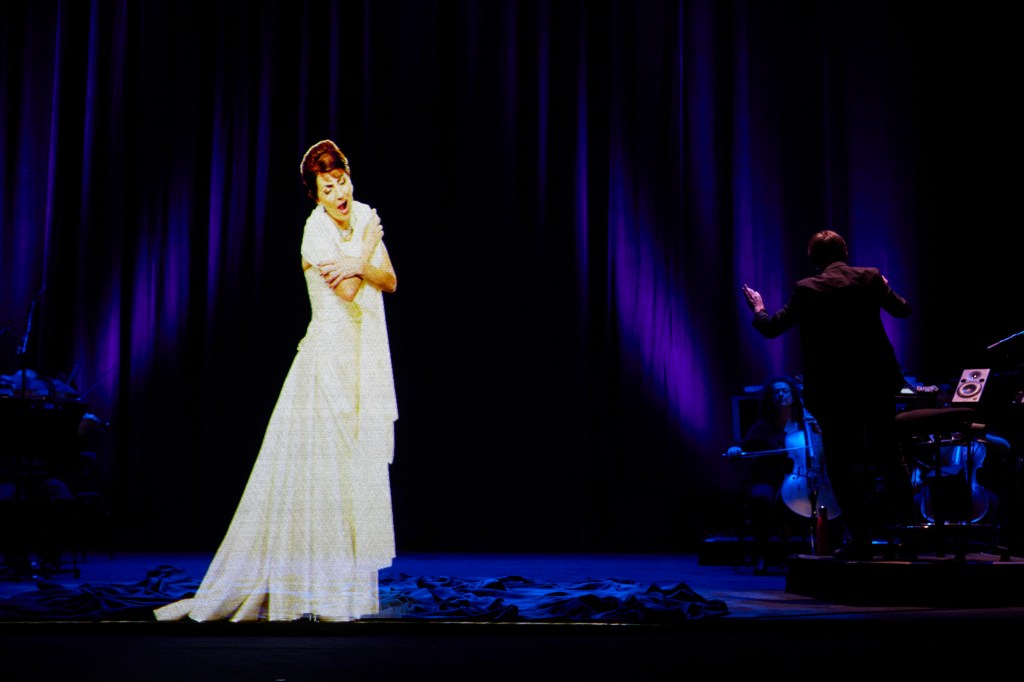Maria Callas: the singer, the woman, the legend. On 7 December, an audience at Melbourne’s Hamer Hall was invited to watch a holographic rendition of the world-renowned soprano in an eerie attempt at reconjuring her charm and virtuosity. The level to which those in the audience enjoyed the performance, I suspect, may have been determined by their expectations and whether they were anticipating it to be “just like the real thing”. The concert in some ways achieved the celebration of Callas’ work, but there remained a slightly unnerving hyper reality as the holograph appeared and the orchestra’s live playing rang out through the auditorium.
Brought to Australia by the European Union and produced by Base Xperiential, this concert has been staged around the world since 2018. The great soprano’s voice has been digitally remastered from various recordings, while her image has, apparently, mainly been constructed by Artificial Intelligence (with body doubles emulating her gestures). The MSO (Melbourne Symphony Orchestra) did a superb job accompanying the visually augmented projections of Callas performing. They were divided into two sections, seated either side of the projection and the lighting was kept low to accentuate the luminescence of the holographic figure.
Despite the rigour of this new technology, there were a few moments where visual and sonic synchronisation fell short, breaking the illusion of the projection and making the concert feel a little strange, even shallow. The acoustics, though presumably meticulously developed using the most cutting-edge technology, lacked the gravitas of a live voice and the shallow iridescence of the projection could never have the impact of the bona fide Callas. A simulation cannot be a substitute for the sublime reality of live performance; as long as spectators keep this in mind, however, they may enjoy the spectacle.
There were moments of impeccable drama, so characteristic of Callas’ presence, such as her interpretation of selections from Bizet’s Carmen (‘Prelude’, ‘Habanera’ and ‘Card’ aria) and ‘Je veux vivre’ (I want to live) from Gounod’s Roméo et Juliette. The most show-stopping arias of Callas’ repertoire were also included, such as ‘Vissi d’arte’ (I lived for art) from Puccini’s Tosca.
Read: Music review: Eric Prydz, HOLO, ALWAYS LIVE, Rod Laver Arena
Despite the technological advancements of this new genre of VR concert, there are shortcomings. But, if we accept that it can never replace live performance, events such as Maria Callas: A Concert In Hologram are a great opportunity for the broader appreciation of opera, a rarefied art form that has so much to offer wider audiences. Above all, it allows everyone to appreciate the genius of artists like Callas long after their death; ars longa, vita brevis (skilfulness takes time and life is short).
Maria Callas: A Concert in Hologram was performed for one night only on 7 December 2023 at Arts Centre Melbourne.
Melbourne Symphony Orchestra
Conductor: Daniel Schlosberg
This review is published under the Amplify Collective, an initiative supported by The Walkley Foundation and made possible through funding from the Meta Australian News Fund.





